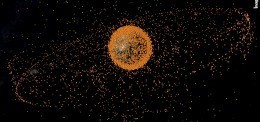GMV’s direct administration and coordination at S3T

In July, under GMV’s direct administration and coordination, the Operations Center (OC) of Spain’s space surveillance and tracking system, known as S3T, formally came into operation.
This marks the start of Spain’s provision of Space Surveillance and Tracking (SST) services in the framework of the European Commission’s dedicated program (EUSST), where it forms part of a program-leadership consortium with France, Germany, Great Britain and Italy. In the framework of Spain’s S3T, GMV is responsible for development of the operations center (S3TOC). This center records Spain’s radar and optical telescope data plus the same data from external sources to keep a catalogue of objects orbiting the earth. This catalogue can then trip collision alerts to allow operational satellites to forecast and avoid collisions, also warning about the detection of orbiting fragments (due to collisions or explosions) and the re-entry of uncontrolled objects to predict their point of contact.
These GMV-coordinated services will be provided for a wide range of potential users, including not only satellite operators in Spain but also throughout Europe. S3TOC’s services are based on triedand-tested technology and systems. The center’s capabilities are expected to grow in the medium term as a rising number of sensors give global coverage to space missions of all types, whether in low-Earth orbit (for example, Earth-observation missions), medium-Earth orbit (used by navigation missions like Galileo) or geostationary (used mainly by satellite communication missions).
Up to now only the United States and Russia had the advanced capability of keeping a space-debris catalogue and providing SST services. Europe now hopes to develop these capabilities through the European Commission’s program, and this initiative has won Spain pole position in space-debris monitoring endeavors.
GMV is one of the world’s prime spacedebris stakeholders, providing inhouse services and developing its own technology for over a decade now. It now has a twenty-strong team working from 5 different countries on space-debris tracking and surveillance programs.